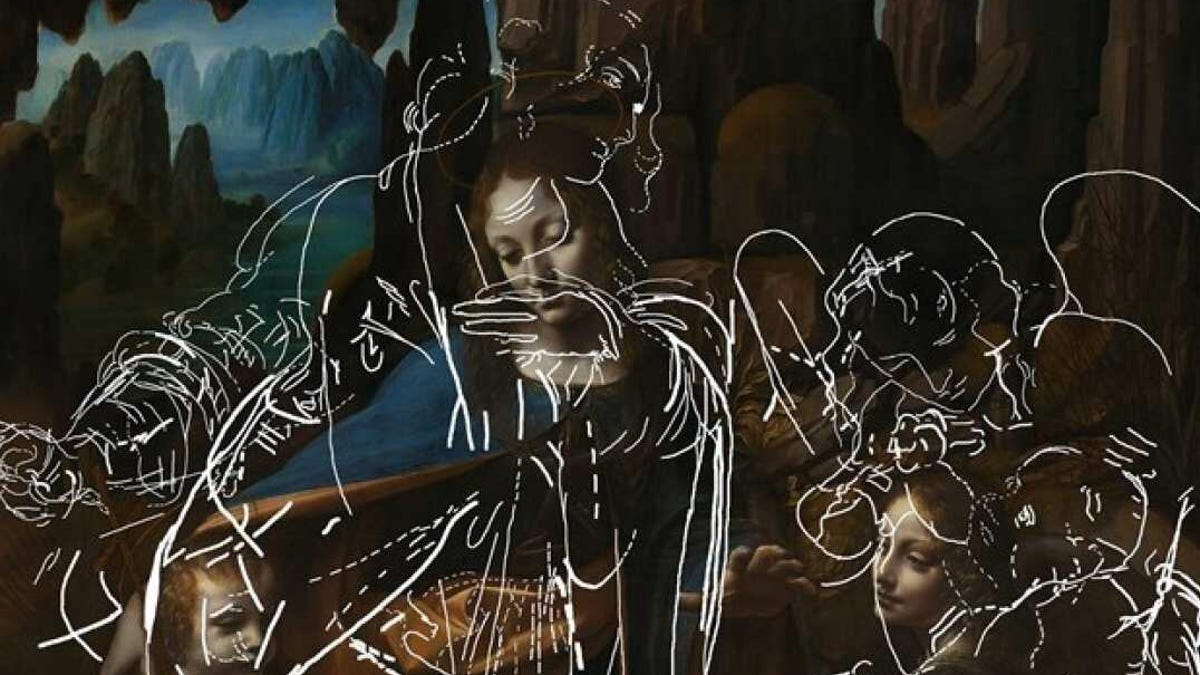Secrets of da Vinci painting uncovered by new algorithm
Original drafting sketches were revealed beneath the 500-year-old masterpiece.

Virgin of the Rocks, by Leonard Da Vinci, overlaid with the artist's original sketches, as recovered by researchers at Imperial College London and the National Gallery.
Although it's been studied by academics and admirers for 500 years, Leonardo da Vinci's masterpiece Virgin of the Rocks had more to teach scientists and art scholars at Imperial College London and the National Gallery. Using a combination of X-ray scanning and a new algorithm, the researchers were able to uncover hidden figures of da Vinci's first sketches on the canvas, which included an angel and the Infant Christ.
The latest visual excavation comes after National Gallery researchers discovered partial drawings beneath the painting via infrared imaging. Building on this work, researchers used a noninvasive method called macro X-ray fluorescence (MA-XRF) scanning to painstakingly check each pixel of the painting to detect different chemical elements within the materials Leonardo used, which included zinc. Researchers then developed an algorithm to sort this massive amount of data.
"Each pixel contained different amounts of each element, within various layers. We analyzed each pixel individually before combining them to see all the underdrawings in the painting. This revealed a much sharper image of the angel and baby," said Imperial College London's Pier Luigi Dragotti in a release Tuesday.
Researchers said their newly combined method of art analysis could make it much easier to recover similar underlying images elsewhere, potentially opening up art data access to students and galleries.
Researchers didn't immediately respond to CNET's request for comment.
The Virgin of the Rocks is displayed at the National Gallery in London.
Crouching angel, hidden baby.
— Imperial College (@imperialcollege) February 4, 2020
(AKA how an Imperial algorithm uncovered hidden figures in a classic Leonardo Da Vinci painting)
A thread 👇 1/9 pic.twitter.com/jFSkcqNlJU

